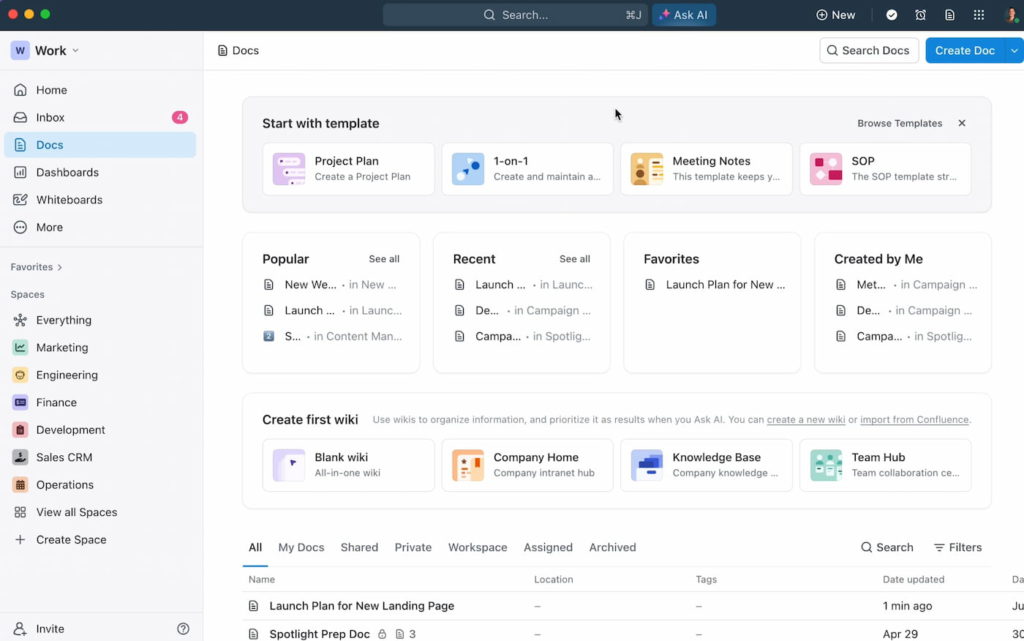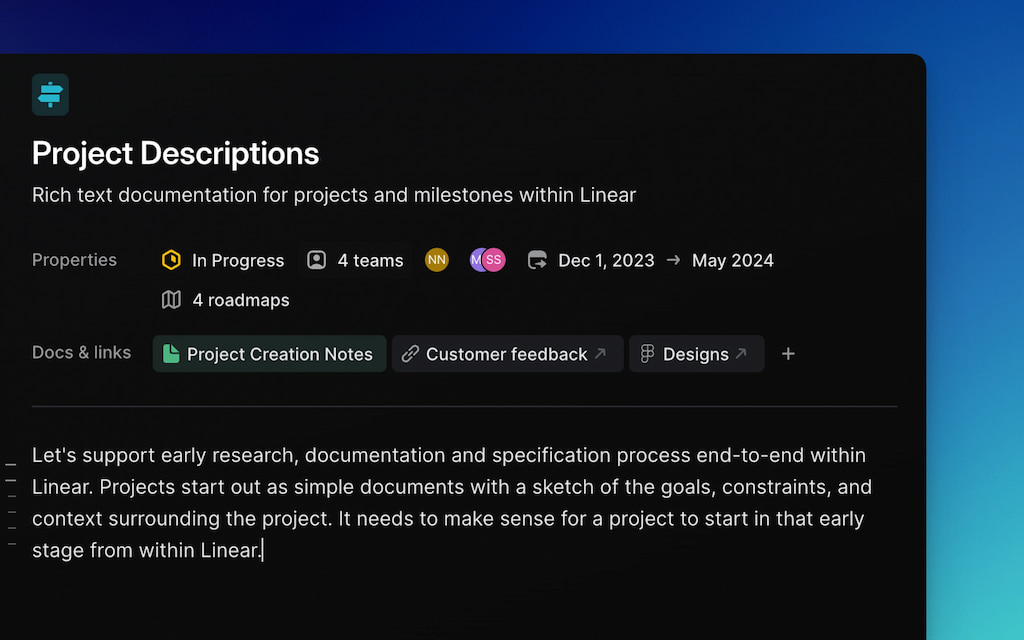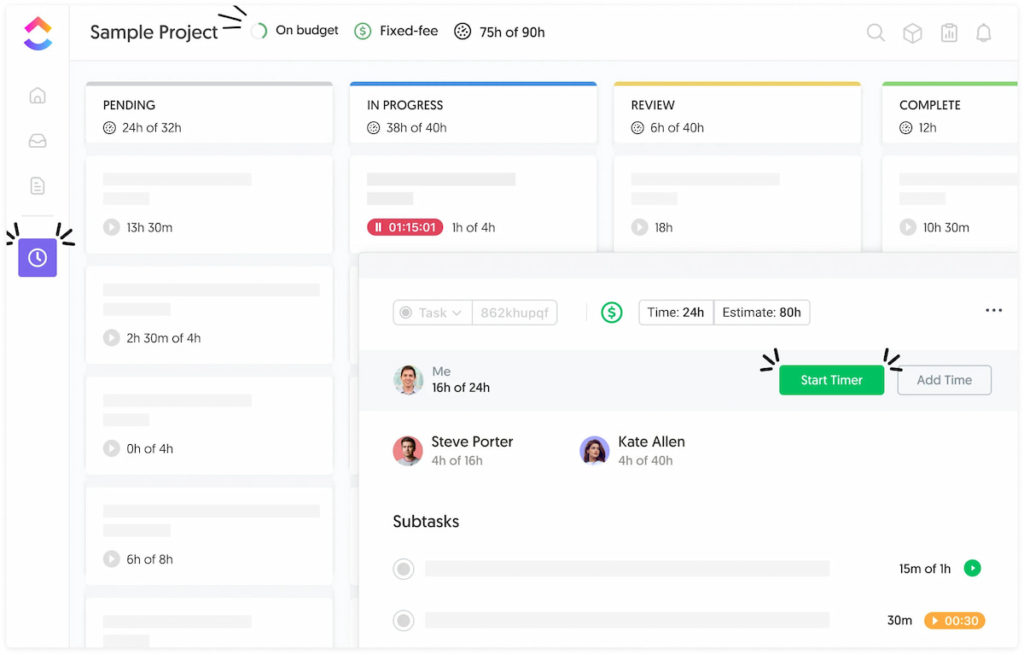Running a B2B SaaS company means juggling product sprints, onboarding workflows, customer escalations, and go-to-market launches — all at once. It’s chaos if you don’t have the right infrastructure. Project management isn’t a “nice-to-have” here. It’s the core operating system of the business. In 2025, there’s no shortage of the best project management software for B2B SaaS companies.
But most tools either do too little, or they try to do everything and end up confusing your team. We’re going to cut through the noise and look at what actually works for SaaS companies. Especially the ones that are moving fast and can’t afford to spend six weeks training their team on a new process.
🏆 Top Project Management Software for B2B SaaS
The best tool depends on your stage, your structure, and who actually owns project delivery in your organization. Here’s a quick comparative table of B2B project management tools — but keep reading for use cases that go beyond the buzzwords.
| 🛠️ Tool | Best For | Strengths |
|---|---|---|
| ClickUp | All-in-one product + ops | Docs, sprints, goals, time, automations |
| Asana | Marketing + cross-functional | UX, campaign planning, timelines, goals |
| Linear | Product + engineering teams | Fast UI, sprint velocity, GitHub/Slack integrations |
| Jira | Scaled product dev | Deep ticketing, agile boards, release workflows |
| Trello | Lightweight ops, CS, interns | Kanban, easy onboarding, checklists |
| Notion | Docs + project hybrid teams | Knowledge + tasks + wikis in one |
| Wrike | Mid-size SaaS ops | Workflow builders, reporting, cross-dept visibility |
🎯 Why One PM Tool Doesn’t Fit Every SaaS Team
Let’s say you’re a 30-person SaaS company. You’ve got product managers running agile sprints. Marketing is prepping your next launch. Customer success is firefighting onboarding issues. You need a project management system, but your product and CS teams want very different things.
That’s normal. Great PM tools recognize this. They let each function work how they want (agile boards, docs, lists, dashboards) while still centralizing visibility. ClickUp is probably the strongest contender here, especially when paired with time tracking like Everhour.

If you’re a startup doing mostly product work, Linear will feel lightning-fast. But it’s a dev tool first. The second your CS team or marketing team gets involved, you’re duct-taping Notion docs or Slack threads to explain what’s going on.

SaaS companies grow cross-functional by default. You can’t silo teams anymore. Your PM tool needs to reflect that.
🔍 What “Good Project Management” Actually Means for SaaS
Forget vendor demos showing drag-and-drop boards and integrations you’ll never use. What matters for a B2B SaaS company in 2025:
- Time to clarity: Can someone new open the tool and instantly know what matters?
- Backlog hygiene: Can product managers track sprints without duplicating work in GitHub or Jira?
- Process visibility: Can the COO, the Head of CS, and the marketing lead all see what’s going live this month?
- Task-to-metric traceability: Can you tie a task to a feature, a launch, or an objective without spreadsheets?
ClickUp, Asana, and Notion all do this differently. But ClickUp is the only one that can do all of it natively — sprints, docs, goals, dashboards, time. It’s a control panel for fast-moving orgs.
✅ Why ClickUp Wins for Fast-Growing SaaS Teams
No, it’s not the cleanest interface. And yes, the onboarding can be messy. But ClickUp handles:
- Feature sprints (with velocity tracking and estimates)
- Onboarding pipelines for CS (with templates and automations)
- Quarterly OKRs (with dashboards and goal tracking)
- Documented SOPs + internal wikis
- Real-time reporting by assignee, department, or customer
And it does all of this in a single workspace. That means fewer tabs, less misalignment, and more time actually building.
If you add Everhour’s ClickUp time tracking integration, you unlock real insight into delivery costs and effort. And that’s the thing execs care about most when scaling — not just “is this done,” but “how long did it take, and what did it cost us to get here?”

🧠 The Real Reason You Need Time Tracking in Your PM Stack
You can’t run product sprints and not track time. Not because you’re micromanaging. But because your:
- Finance team wants to know dev spend per initiative
- CS team wants to know how long onboarding takes
- CEO wants to know where engineering resources are going
Everhour plugs into ClickUp, Asana, Notion, and Trello. It lets you:
- Track hours by project, feature, or task
- Set budgets per sprint or epic
- Build reports for operations and billing
- Visualize time inside the PM tool — not in some export
Time is money. And B2B SaaS is margin-sensitive. Act like it.
🔎 Best Project Management Software for B2B SaaS Companies: Final Word
You don’t need project management. What you need is project alignment. You need your product, ops, marketing, and onboarding teams to work off the same reality. Not five Slack threads and a Google Sheet.
That’s what tools like ClickUp and Everhour give you. If:
- 🚀 You’re a lean startup: Use Linear for product, Notion for docs, and Everhour to stay sane.
- 📈 You’re scaling: Centralize everything in ClickUp and plug in Everhour from day one.
- 🐢 Your company is big and clunky: Good luck. But Wrike might help.
Whatever you do, stop pretending “just having Jira” means you’re managing work. Get visibility. Get accountability. And run your SaaS like a product company, not a spreadsheet factory.
Check out the best B2B invoicing software! And learn more about the best B2B email marketing platforms out there!
Make sure to learn how to do B2B market research!

